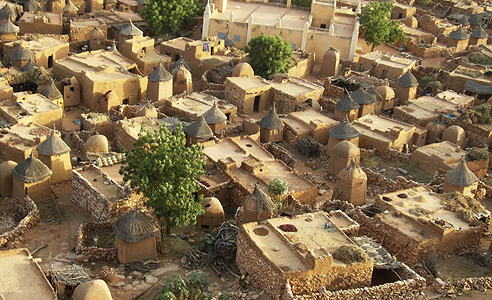
Dogon Houses and Granaries

Dogon culture, living in the central plateau region of Mali, in Burkina Faso, West Africa, is best known for its unique traditional religion, mask dances, wooden sculpture and high density stone and earth architecture. The architecture of the village is composed of several types and uses of building: 1. Male granary for storing pearl millet and grains, with a pointed thatch roof; 2. Female granary similar to mail granary construction, but for storage of womens' belongings; 3. Tógu nàm a building only for men the roof of which is composed of 8 layers of millet stalks, and is too low to stand upright; a shady place to rest and negotiate important village decisions; 4. Punulu (a house for menstruating women who can not be in the family house during their periods).
Elevation is around 396 meters (1300 feet) above sea level.
Materials: stone and mud brick walls, roofs of millet stalks, mud and thatch.
Data for CG model:
1. Blom, Huib, 2017: Dogon, Images & Traditions; Book freely available for download in PDF format: http://www.dogon-lobi.ch
2. van Eyck, Aldo, Dogon Dwelling. Mali. Plan and Section (Field Sketches); Sketches by Aldo Van Eyck; Norbert Schoenauer; "6000 Years of Housing."


